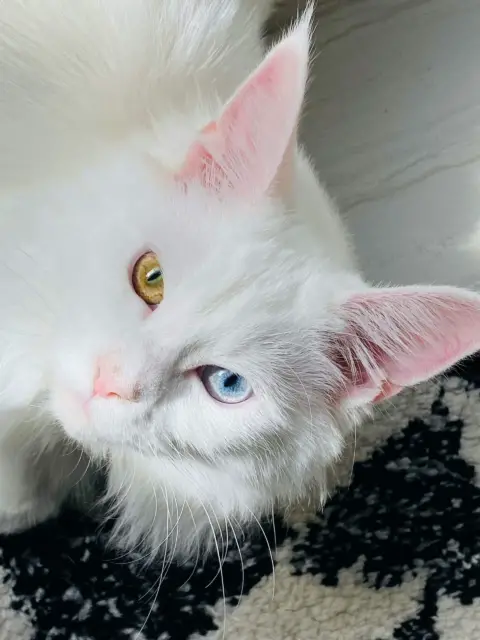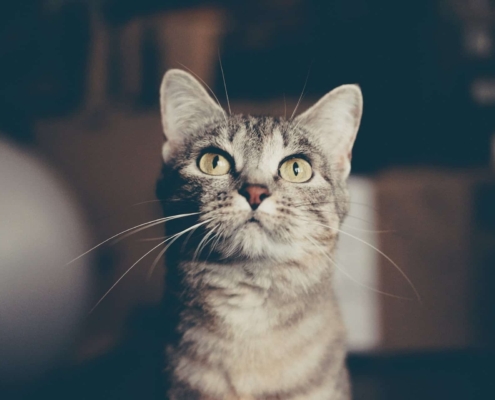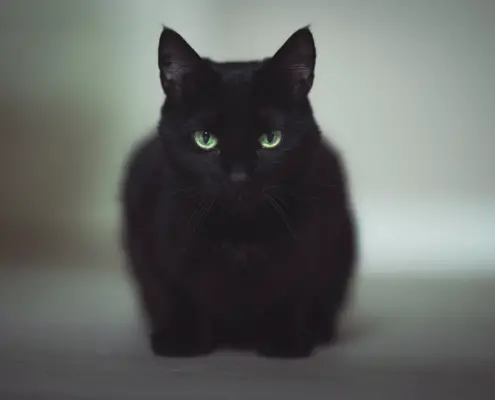
Cats have always been fascinating creatures, with their unique looks and personalities. One of the most striking features of some cats is their odd eyes, which can be quite mesmerizing. In this comprehensive guide, we will explore the world of odd-eyed cats, from their genetic background to their physical characteristics, behavioral traits, health considerations, care and grooming tips, training and socialization, interesting facts and myths, and even some famous odd-eyed cats in history and pop culture. Whether you are a cat lover or simply curious about these enchanting felines, this guide will provide you with all the information you need to appreciate them.
Introduction to Odd-Eyed Cats
Odd-eyed cats are those that have two different eye colors, usually one blue and one green or gold. This unique trait is caused by a genetic mutation that affects the melanin production in the iris of the eyes. This mutation is more commonly found in certain breeds of cats, such as Turkish Angoras, Japanese Bobtails, and Sphynx cats, but can also occur in mixed-breed cats. Odd-eyed cats are often considered lucky or special in some cultures, and their mesmerizing gaze has captivated many cat lovers around the world.
Genetic Background and Causes of Odd-Eyed Cats
The genetic mutation that causes odd eyes is known as complete heterochromia, which means that one eye has a different color than the other. This mutation is caused by a lack of melanin in one iris, which results in a blue or green color, while the other iris has a normal amount of melanin, resulting in a gold or orange color. This mutation is usually inherited from a parent with the same trait, but can also occur spontaneously in some cases.
Odd-eyed cats can also have a partial heterochromia, which means that only part of one iris is a different color than the rest. This can result in a unique and striking appearance, especially when combined with other physical characteristics, such as white fur or a unique pattern. While odd-eyed cats are usually healthy and have no vision problems associated with their mutation, it is important to have them checked by a veterinarian regularly.
Physical Characteristics of Odd-Eyed Cats
Aside from their mesmerizing eyes, odd-eyed cats can have a variety of physical characteristics that make them unique and beautiful. Some breeds, such as Turkish Angoras and Japanese Bobtails, are known for their long, silky fur and graceful bodies. Others, such as Sphynx cats, are known for their hairless bodies and wrinkled skin. Odd-eyed cats can also come in a variety of colors, from pure white to black and everything in between.
One interesting physical characteristic of odd-eyed cats is that they often have an asymmetrical face, with one side of the face having more white fur than the other. This is called the Van pattern, and is more common in cats with odd eyes. This pattern is named after the Van cat, which is a breed that is known for its odd eyes and distinctive coloring.
Behavioral Traits and Personality of Odd-Eyed Cats
While the physical characteristics of odd-eyed cats are certainly striking, their personality and behavior are just as fascinating. Just like any other cat, odd-eyed cats can have a variety of personalities, from playful and curious to aloof and independent. Some breeds, such as Turkish Angoras, are known for their social and affectionate nature, while others, such as Sphynx cats, are known for their mischievous and energetic personalities.
Despite their unique appearance, odd-eyed cats are just like any other cat when it comes to behavior and training. They can be trained to use a litter box, scratch on a designated surface, and even perform tricks with positive reinforcement training. It is important to socialize odd-eyed cats from a young age, however, to ensure that they are comfortable around people and other pets.
Health Considerations for Odd-Eyed Cats
Odd-eyed cats are usually healthy and have no health problems associated with their mutation. However, it is important to have them checked by a veterinarian regularly to ensure that they are healthy and to catch any potential health problems early. Some breeds, such as Sphynx cats, can be prone to certain health problems, such as skin infections and heart disease, so it is important to be aware of these risks and to take appropriate measures to prevent them.
Care and Grooming Tips for Odd-Eyed Cats
The care and grooming needs of odd-eyed cats can vary depending on their breed and coat type. Cats with long, silky fur, such as Turkish Angoras, require regular grooming to prevent matting and tangles. Cats with hairless bodies, such as Sphynx cats, require regular baths and skin care to prevent skin infections and maintain their unique appearance. All cats, regardless of breed or coat type, require regular nail trimming, ear cleaning, and dental care to ensure their overall health and well-being.
Training and Socialization of Odd-Eyed Cats
Training and socialization are important for all cats, including odd-eyed cats. It is important to socialize odd-eyed cats from a young age to ensure that they are comfortable around people and other pets. Positive reinforcement training can be used to teach odd-eyed cats to use a litter box, scratch on a designated surface, and even perform tricks. It is important to be patient and consistent when training cats, and to always use positive reinforcement techniques to encourage good behavior.
Interesting Facts and Myths about Odd-Eyed Cats
Odd-eyed cats have been the subject of many myths and legends throughout history. In some cultures, odd-eyed cats are considered to be lucky or magical, while in others they are seen as omens of bad luck. One interesting fact about odd-eyed cats is that they are more common in certain breeds, such as Turkish Angoras and Japanese Bobtails, but can also occur in mixed-breed cats. Another interesting fact is that odd-eyed cats are often used in advertising and media, due to their unique and striking appearance.
Famous Odd-Eyed Cats in History and Pop Culture
Odd-eyed cats have been featured in many works of art and literature throughout history, and have even become famous in pop culture. One of the most famous odd-eyed cats is Venus, a cat with over 1.5 million followers on Instagram. Venus is a mixed-breed cat with one blue eye and one green eye, and her unique appearance has captured the hearts of many cat lovers around the world. Other famous odd-eyed cats include Snowball, a cat that appeared in the movie The Longest Yard, and Purrfect, a cat that appeared in the TV series Sabrina the Teenage Witch.
Celebrating the Unique Beauty of Odd-Eyed Cats
Odd-eyed cats are truly mesmerizing creatures, with their striking appearance and unique personalities. Whether you are a cat lover or simply curious about these enchanting felines, this comprehensive guide has provided you with all the information you need to appreciate them. From their genetic background and physical characteristics to their behavioral traits and personality, health considerations, care and grooming tips, training and socialization, interesting facts and myths, and even some famous odd-eyed cats in history and pop culture, this guide has covered it all. So, the next time you come across an odd-eyed cat, take a moment to appreciate their unique beauty and fascinating personality.
If you enjoyed my article, I would appreciate you sharing it with your network.

Sima Ndlebe
Sima writes for CatBuzz. He is interested in Cats, Health and Fitness, and Entrepreneurship.
Published: 23 October 2023



